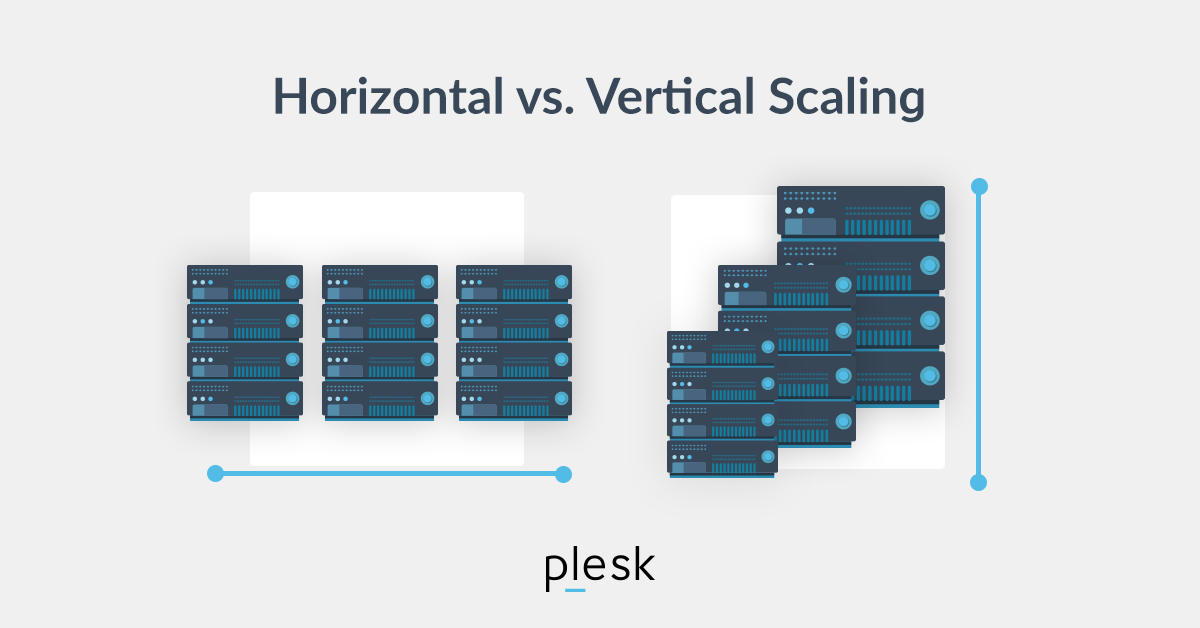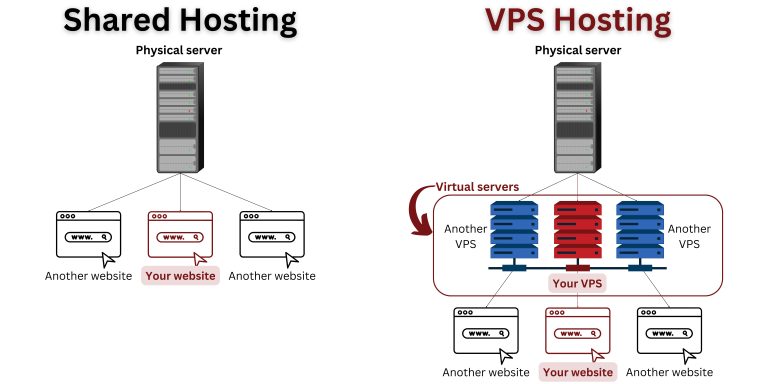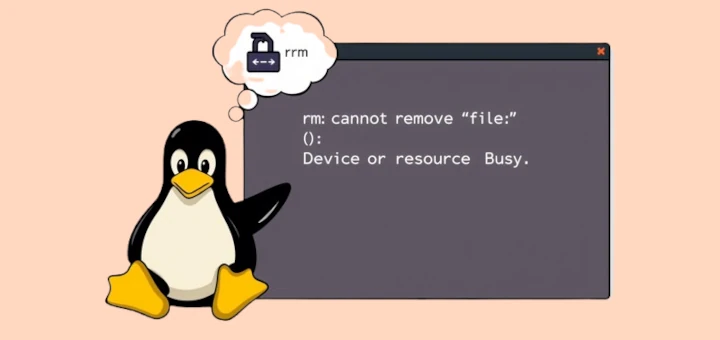
Scaling a server to handle a rise in both traffic and demand can be difficult. Any seasoned developer knows that. Why is it such a challenge? Because it demands in-depth planning and evaluation of everything from pricing to potential growth in years to come.
There are two main types of server scaling: horizontal and vertical. horizontal scaling (otherwise known as “scaling out”) requires that you increase the number of servers you use already. That can be compared to expanding a road with extra lanes to allow for more vehicles.
Vertical scaling (“scaling up”) focuses on improving the capabilities of an existing server instead of buying more of them. That might mean boosting its storage capacity, memory, or CPU. If you wanted your car to run faster and perform better overall, you might upgrade the engine. Vertical scaling is a similar approach.
Horizontal and vertical scaling have their own pros and cons. We’ll explore these below, and compare other key aspects of horizontal and vertical scaling to help you understand which will work best for you.
Why is Server Scaling Important?
When you scale your server, you’re improving its capabilities to meet a current or expected change in requirements. You can either add more resources to a server (the vertical approach) or invest in extra servers to spread the increased workload (horizontal).
Whether you choose horizontal or vertical scaling will hinge on an application’s specific requirements and its workload. It’s crucial that you monitor the performance of your server and tweak your server scaling strategy to maximize both performance and value for money.
You may need to scale your server in a variety of situations. If you operate an online store, for instance, your traffic might spike as the holidays approach or when you hold 24-hour sales. Scaling your server would allow you to handle those traffic surges and ensure your website runs smoothly at all times.
Server scaling can also be useful if you’re planning to add a new product or feature on your site. That would bring more people to your website, which might put strain on your current server configuration. But scaling would make handling a rise in visitor numbers a breeze.
Furthermore, if you operate a data analytics platform or another web app processing a wealth of data, scaling your server could help you handle the expanded computational load.
Server Scaling: How it Works
If you have a new website, web app, or other online service, predicting the traffic you’re likely to attract can be tough. However, over time, it’s likely that you will need server scaling to make it run more smoothly and provide users with a better experience.
An application server’s efficiency can suffer significantly when it receives more traffic or user requests. That’s why making a server scalable is so important: its capacity will grow along with the surging traffic, and, as a result, it will be less likely to experience problems.
If you want to expand your existing server infrastructure with more hardware components (e.g. extra storage or RAM), vertical scaling may work best for you. But if you’re looking to increase the number of servers in your hosting configuration and boost its power, horizontal scaling would be better.
However, scaling can also refer to removing resources to accommodate a drop in traffic. That can be helpful if you’re downsizing your site or web app for any reason, and don’t need your server to operate at the same level.
Horizontal vs Vertical Scaling
Here’s a simple comparison of horizontal and vertical scaling, covering the differences and similarities.
|
Key Factors |
Horizontal Scaling |
Vertical Scaling |
|
What is it? |
Adding resources to a server infrastructure, or taking them away. |
Boosting an existing resource’s capacity, or reducing it. |
|
Use Case |
Adding virtual machines to a cluster of them, or removing some. |
Adding RAM or CPU to an existing virtual machine, or reducing current RAM or CPU. |
|
Scaling Direction |
In or out |
Up or down |
|
Model |
Stateless server scaling |
Stateful server scaling |
|
Pricing |
Greater expense with licensing costs |
Less expense with licensing costs |
|
Power |
Separate server’s power grows |
Individual servers’ power increases with the existing server |
|
Workload |
Distributes workload across servers |
Workload is handled in the way of multi-core systems |
|
Downtime |
Less possibility of downtime |
Physical limitation on downtime |
|
Efficiency |
Optimal |
Suboptimal |
|
Data |
Partitioned |
Single-node storage |
What are the Pros and Cons of Horizontal Scaling?
Horizontal scaling/scaling out involves adding extra machines or nodes to your current server configuration to accommodate an increase in demand. If your web app sees a rise in session numbers, you could use horizontal scaling to spread the increased load across multiple machines. You would improve your web app’s reliability and overall performance by distributing the workload more evenly.
But horizontal scaling can make for a complex process, particularly if you want to downsize instead of upsize.
Pros of Horizontal Scaling
Horizontal scaling offers the following benefits:
- Decrease downtime: Operating more than one machine at once reduces the danger of downtime significantly.
- Cost effective: With horizontal scaling, you only pay for what you use. That can help you save money in the long run.
- Easy scalability: Managing limitations of hardware capacity is simpler with horizontal scaling. You can adjust system sizing to meet your needs in an easier way.
- Reliable availability: Even if one or more of the machines in the configuration fail, your system remains available and functional.
- Straightforward upgrades: You can easily upgrade the system on single machines, with no need to affect the whole system.
- No need to pay for peak demand: You can scale up or down according to demand levels. That means you won’t need to pay for peak demand capacity when you don’t need it.
- Backup: As multiple machines are running simultaneously, others are available if one or more fail.
Cons of Horizontal Scaling
Horizontal scaling has the power to improve general performance and reliability. However, it can lead to a more complicated configuration than using one server. Here are the main drawbacks to consider.
- Complex maintenance: Maintaining a server cluster is more complicated than just one. That’s because of the sheer amount of components, which are more of an effort to monitor. There are additional points of failure to consider too.
- Coordination challenges: A server cluster is made up of multiple machines operating simultaneously. Coordinating and managing these can be incredibly complex.
- Architectural demands: To ensure the system is capable of accommodating the load properly, it has to be created as a server cluster with a distributed architecture. You need to take care when planning that and putting it together to ensure that all servers function together well to suit your goals.
Horizontal Scaling Example Scenarios
Horizontal scaling can be helpful in the following situations:
- You need higher performance: When you have a service that needs high performance to run at its best, you can use horizontal scaling to spread the workload between several machines. That will boost the entire system’s performance.
- You need a flexible setup: As you’ll have more than one machine with horizontal scaling, you can configure each one differently to boost overall efficiency.
- You want to avoid a single failure point: You’ll face less danger of a single point of failure with horizontal scaling. There are multiple machines, so if one fails, the rest can compensate.
- You have a microservices architecture: Horizontal scaling may be especially beneficial in a microservices architecture. You can scale each microservice independently according to its demand. That can help a distributed system perform better overall.
What are the Pros and Cons of Vertical Scaling?
Vertical scaling/scaling up improves a single component’s capacity and resources, rather than spreading the load across multiple machines (as with horizontal scaling). Commonly, vertical scaling is utilized for systems like relational databases, which aren’t made to be distributed. Vertical scaling offers a direct solution for improving the performance of a system by upgrading an existing machine’s current capabilities.
If a spike in complicated queries and data volume overloads a database, for instance, vertical scaling may be a great help. Scaling RAM, storage, and CPU would enable the database to handle the load more efficiently.
Pros of Vertical Scaling
Vertical scaling offers the following benefits:
- Save money: As you don’t need to add extra resources to your server configuration, and you’re upgrading current ones instead, vertical scaling can help you achieve more in a cost-effective way. It’s less expensive than buying additional machines and maintaining them.
- Simple implementation: You can implement vertical scaling more easily, as there’s no need to make substantial software changes. Instead of incorporating new resources into your configuration, you’re simply enhancing it.
- Streamlined development: Vertical scaling allows for software to be developed in a more streamlined way, without it needing to be refactored into a distributed architecture.
- Easier system maintenance: With vertical scaling, you only need to maintain one system instead of a distributed architecture. It’s simpler as a result, with less maintenance required and less expense.
Cons of Vertical Scaling
Vertical offers some strong advantages, but it has its fair share of disadvantages too. Here are the major cons to consider:
- Extra Risk with a single point of failure: Vertical scaling features just one server, which carries a greater danger of data loss if the hardware or software fails.
- Limited room for scaling: You can only scale up one server so much. All machines have a maximum capacity for storage, processing power, and RAM. You won’t be able to scale up any more once you hit this wall.
- More downtime: To put vertical scaling into effect, you’ll likely need to take the server down to be upgraded or patched. That means a break in delivering services and unavoidable downtime.
Vertical Scaling Example Scenarios
You could benefit from vertical scaling in the following situations:
- You need effective traffic management for a small business: If you run a small business and you need effective traffic management without high demands, vertical scaling may be the budget-friendly option for you.
- You want to enhance one server’s performance without adding resources: You can use vertical scaling to improve an existing server’s performance without investing in new ones. That’s ideal when you want to get more bang for your buck from your current machine.
- You don’t need redundancy for smooth operations: If your business doesn’t need redundancy to operate to the required standard, vertical scaling can be a more straightforward solution.
- You don’t know how much traffic you’ll get: Are you uncertain how many users or how much traffic you’ll receive, and their consistency? With vertical scaling, you can tweak your server’s capacity as necessary.
- You need to take legacy applications further: You can rely on vertical scaling to boost the performance of legacy applications that don’t need high distribution or scalability.
- You want to avoid downtime as much as possible: As vertical scaling demands fewer upgrades, and less often, you’re less likely to experience downtime.
- You don’t have many capable engineers: Vertical scaling may be the better option if you don’t have a strong team of engineers, as it focuses on enhancing a single server instead of several machines.
What is Autoscaling and How Does it Work?
Businesses planning to scale their operations have two main options: vertical (contracting or expanding) and horizontal (outwardly or inwardly). Scaling vertically improves the infrastructure, and scaling horizontally introduces extra terminals instead.
This process can be assisted by a groundbreaking technology known as “autoscaling”. With autoscaling, computational resources are managed and distributed dynamically according to server load. Companies can leverage autoscaling to change their cloud services (e.g. virtual machines) automatically, based on utilization levels, traffic, or other defined factors.
For example, organizations may find managing their website difficult during a sudden period of high traffic, and it could become slower or even crash. Autoscaling solves this problem by changing capacity automatically according to the current requirements of the website.
Autoscaling activates extra servers when traffic volume rises and deactivates them when volume drops. That maximizes performance and utilization of resources.
Tips for Picking the Best Server for Your Business
Deciding between horizontal scaling, vertical scaling, and autoscaling can be daunting for companies of all sizes. Keep the following factors in mind to make it easier:
Managing Traffic
- Horizontal scaling: Capable of handling potentially hundreds of thousands of simultaneous requests. It enhances performance and speed significantly.
- Vertical scaling: A reliable choice for moderate traffic volumes.
- Autoscaling: Changes cloud services (e.g. server capacities) automatically as per the conditions defined, such as traffic volume.
Logic Processing
- Horizontal scaling: Sequential logic pieces are broken down into smaller, more manageable parts and executed across more than one machine.
- Vertical scaling: The same code is run on stronger machines, but the logic remains unchanged.
- Autoscaling: Computational resources are managed and distributed dynamically, according to the server load.
Managing Databases
- Horizontal scaling: Introduces extra servers and needs multiple queries to be managed. However, it’s capable of managing bigger databases in an effective way.
- Vertical scaling: Builds up existing servers with extra resources. That allows for data execution on one node, and managing data is simpler.
- Autoscaling: Activates more servers automatically to handle spikes in traffic. Deactivates those servers when the traffic volume falls to a normal level.
Using autoscaling can alter your resources to suit your current requirements, regardless of whether you go for horizontal or vertical scaling. It can help you maintain ideal performance and utilization of resources. Consider your options carefully based on your current needs and how they may change in the future.
Conclusion
Choosing a suitable scaling approach for your business takes a lot of thought and due diligence. You need to think about a range of factors, including traffic volume, budget, availability, and overall performance. Whatever decision you make, that should fit your goals and help you operate at your best.
Vertical scaling is the better option for handling complicated tasks with stronger processing power, while horizontal scaling is best for managing traffic in high volumes instead.
Take your time, weigh up the possibilities, and focus on what’s best for your business in the long run.





